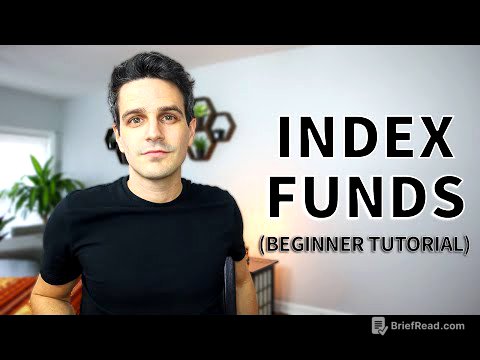TLDR;
This episode of the Huberman Lab podcast explores the science and practice of meditation, detailing how different types of meditation affect the brain and body, and how to tailor a meditation practice to specific goals such as enhancing focus, improving mood, or reducing sleep needs. It covers the neuroscience of meditation, including key brain areas involved, the importance of interoception versus exteroception, and the role of breathwork. It also introduces a new meditation practice called Space-Time Bridging (STB) and emphasizes the importance of aligning meditation practices with individual needs and biases for optimal benefits.
- Understanding the neuroscience of meditation helps tailor practices for specific goals.
- Balancing interoception and exteroception is crucial for mental well-being.
- Breathwork can significantly influence the state achieved during meditation.
- Consistency and personalized practice adjustments are key to successful meditation.
Meditation [0:00]
The episode introduces meditation as a science-backed tool for improving sleep, mood, focus, and overall cognitive and physical performance. It addresses common misconceptions about meditation, such as the need for increasing meditation time to see results, and emphasizes the importance of choosing the right meditation practice based on individual goals. The discussion aims to provide listeners with a variety of meditation practices and the knowledge to modify them according to their specific needs and circumstances.
InsideTracker, Thesis, ROKA, Momentous Supplements [4:13]
The host thanks the sponsors of the podcast, which include InsideTracker, a personalized nutrition platform; Thesis, a custom nootropics provider; ROKA, a maker of high-quality eyeglasses and sunglasses; and Momentous Supplements. He briefly explains each sponsor's products and how they align with the podcast's theme of providing science-based tools for everyday life.
Brief History of Meditation: Consciousness, Psychedelics, fMRI [8:25]
The history of meditation is discussed, tracing its roots and popularization in the United States, particularly through the work of Jon Kabat-Zinn. The conversation touches on the early connections between meditation and psychedelics in the exploration of consciousness, and how these paths diverged. The advent of brain imaging technologies like fMRI allowed scientists to study the mechanistic basis of meditation, revealing numerous benefits for the brain and body.
How the Brain Interprets the Body & Surrounding Environment; Mindfulness [16:19]
Key brain areas involved in meditation, including the prefrontal cortex, anterior cingulate cortex (ACC), and insula, are introduced. The left dorsolateral prefrontal cortex is highlighted for its role in interpreting emotions and bodily sensations. The ACC is described as a critical station for making sense of bodily signals, while the insula interprets both internal and external information to determine the appropriateness of bodily sensations in a given context.
Neuroscience of Meditation; Perceptual Spotlights [26:07]
The discussion shifts to what happens during a generic meditation practice at the neural level, breaking down the practice into component parts. Closing one's eyes is identified as a profound shift that reduces exteroception and focuses perceptual spotlights on internal sensations. The concept of perceptual spotlights is introduced, explaining how attention can be narrowly focused or broadly diffused, and how these spotlights can be split or merged.
AG1 (Athletic Greens) [32:27]
The host acknowledges one of the podcast's sponsors, Athletic Greens (now AG1), a vitamin mineral probiotic drink. He explains that he has been taking Athletic Greens since 2012 because it provides essential probiotics for gut health, along with adaptogens, vitamins, and minerals to meet foundational nutritional needs.
Interoception vs. Exteroception [33:41]
The episode defines interoception as the sensing of everything at the level of the skin and inward, while exteroception is the perception of everything outside the confines of the skin. Closing the eyes during meditation shifts perception towards interoception, activating the ACC and insula. The ability to count heartbeats without physical assistance is presented as a measure of interoceptive awareness.
Default Mode Network, Continuum of Interoception & Exteroception [42:20]
The default mode network, associated with mind wandering, is discussed in relation to a study titled "A Wandering Mind is an Unhappy Mind." The study found that people are less happy when their minds are wandering, regardless of the activity. Meditation is presented as a practice to adjust one's position along the interoceptive-exteroceptive continuum, emphasizing the importance of being present in the moment for happiness and improved mood.
Tools: Interoceptive or Exteroceptive Bias, Meditation Challenge [53:30]
A tool is introduced to help listeners determine their interoceptive or exteroceptive bias at any given moment. It's suggested that individuals should choose a meditation practice that works against their default state to encourage neuroplasticity. The importance of challenging oneself during meditation, rather than taking the easy path, is emphasized for more effective brain changes.
State & Trait Changes, Interoceptive & Exteroceptive Meditations, Refocusing [1:01:48]
The discussion distinguishes between state changes (immediate changes) and trait changes (long-lasting changes) in relation to meditation. The book "Altered Traits" by Daniel Goleman and Richard Davidson is recommended for further understanding of this distinction. The key to effective meditation is identified as the refocusing process, where the more times the mind wanders and is brought back, the more effective the practice becomes.
Tool: Brief Meditations, Waking Up App [1:07:35]
The benefits of brief meditations, even as short as three minutes, are highlighted. The Waking Up app by Sam Harris is recommended for its short descriptions of what meditation is doing and what specific meditations can do for the user. The app is praised for encompassing a wide range of meditation possibilities and promoting consistent meditation practices.
“Third Eye Center” & Wandering Thoughts [1:10:30]
The concept of the "third eye center" is explored, clarifying that it refers to the prefrontal cortex rather than the pineal gland. Focusing attention on the prefrontal cortex, where there is no sensation, allows thoughts, emotions, and memories to become more prominent in awareness. The wandering and disorganized nature of thoughts during meditation is discussed, emphasizing that most people are often in their heads and not present to what they are doing.
Meditation: Practice Types, Focal Points & Consistency [1:20:46]
The episode recaps the brain networks activated during meditation and the importance of assessing one's position along the interoceptive-exteroceptive continuum. The key components of a meditation practice are identified as perception, focus, and breathing pattern. Consistency is emphasized as the most important factor in achieving the benefits of meditation, regardless of the duration of each session.
Breathwork: Cyclic Hyperventilation, Box Breathing & Interoception [1:24:10]
The role of breathing patterns in meditation is explored, distinguishing between cyclic hyperventilation (Wim Hof breathing) and slower, controlled breathing techniques like box breathing. Deliberately focusing on breathing shifts attention to interoception. The importance of asking oneself whether they want to be more relaxed or more alert at the end of a meditation session is emphasized, with longer inhales promoting alertness and longer exhales promoting relaxation.
Tool: Meditation Breathwork, Cyclic vs. Complex Breathwork [1:30:41]
The tool provides specific instructions on how to breathe during meditation to achieve different states. It is explained that if inhales are longer or more vigorous than exhales, it promotes alertness, while emphasizing longer or more vigorous exhales promotes relaxation. The more deliberate and unnatural the breathing pattern, the less one will be able to focus on other things, making breathwork itself a form of meditation.
Interoception vs. Dissociation, Trauma [1:39:22]
The episode introduces another continuum: interoception versus dissociation. Dissociation is defined as a lack of bodily awareness or a removal of one's conscious experience from one's bodily experience and awareness, often associated with traumatic events. The optimal state is somewhere in the middle, balancing bodily awareness with the ability to engage with the external world.
Model of Interoception & Dissociation Continuum [1:47:43]
A mental model is presented to illustrate the ideal state along the interoceptive-dissociative continuum, where individuals are neither overly focused on internal sensations nor completely checked out. The model describes different shapes of the continuum (V, U, flat, convex) to represent various states of mental health, with the goal of achieving a balanced state where one can feel their feelings while still being actively engaged in the world.
Meditation & Dissociation: Mood, Bias & Corresponding Challenge [1:53:39]
The positive effects of meditation on mood are discussed, emphasizing the importance of being present to one's experience. However, it's noted that meditation can worsen conditions if not aligned with individual biases. Those with high interoceptive awareness may benefit more from exteroceptive practices, while those who are more dissociative may benefit from interoceptive practices.
Meditation & Sleep: Yoga Nidra, Non-Sleep Deep Rest (NSDR) [2:00:18]
The episode addresses the question of whether meditation can replace sleep, noting that while some studies suggest it can reduce sleep need, this is controversial. Yoga nidra and NSDR are presented as practices that can replenish neuromodulators and reduce cortisol, potentially replacing lost sleep. A study showing the improvement of sleep in chronic insomnia patients through yoga nidra is highlighted.
Choosing a Meditative Practice; Hypnosis [2:11:33]
The key decisions in developing a meditative practice are summarized, including determining what one will do regularly and whether the practice is designed to enhance focus or relaxation. Hypnosis is distinguished from meditation, NSDR, and yoga nidra, noting that it is designed to address specific problems, while meditation is more focused on adjusting the default mode network.
Tool: Space-Time Bridging (STB) [2:14:53]
A new meditation practice called Space-Time Bridging (STB) is introduced, designed to balance interoception and exteroception and cross various time domains. The practice involves stepping through different locations, from pure interoception to distant points in space, to exercise the ability to deliberately place perception along the interoceptive-exteroceptive continuum.
Zero-Cost Support, YouTube Feedback, Spotify & Apple Reviews, Sponsors, Social Media [2:25:00]
The host encourages listeners to support the podcast by subscribing to the YouTube channel, subscribing and leaving reviews on Spotify and Apple, and checking out the sponsors mentioned at the beginning of the episode. He also invites listeners to leave questions and comments on YouTube and to follow him on Instagram, Twitter, and Facebook for more science-based tools and information.









